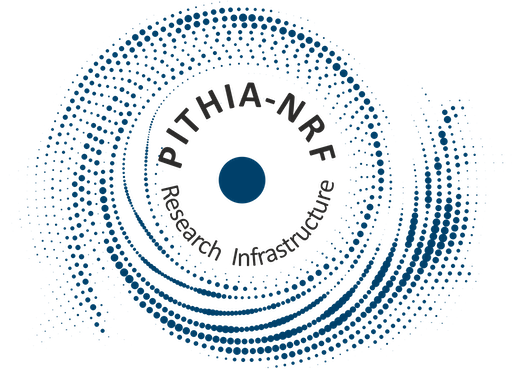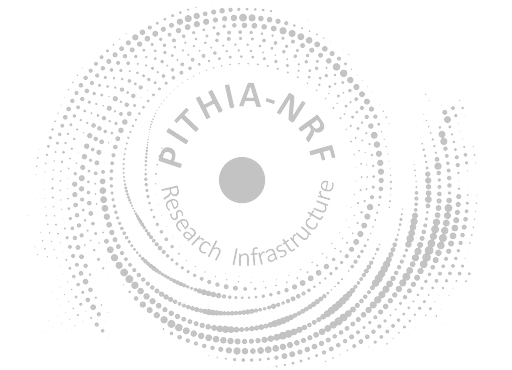<?xml version="1.0" encoding="UTF-8"?>
<DataSubset xmlns="https://metadata.pithia.eu/schemas/2.2" xmlns:doi="http://www.doi.org/2010/DOISchema" xmlns:gmd="http://www.isotc211.org/2005/gmd" xmlns:gml="http://www.opengis.net/gml/3.2" xmlns:xlink="http://www.w3.org/1999/xlink">
<identifier>
<PITHIA_Identifier>
<localID>DataSubset_Evaluation_Of_A_Low-cost_Receiver_For_Ionospheric_Monitoring</localID>
<namespace>rob</namespace>
<version>1</version>
<creationDate>2025-06-18T09:41:00Z</creationDate>
<lastModificationDate>2025-06-18T14:40:00Z</lastModificationDate>
</PITHIA_Identifier>
</identifier>
<entryIdentifier xlink:href="https://metadata.pithia.eu/resources/2.2/staticDataset/pithia/StaticDatasetEntry_TNA_Reports"/>
<dataSubsetName>Evaluation of a low-cost receiver for ionospheric monitoring</dataSubsetName>
<dataSubsetDescription>High-grade GNSS receivers are the basis for ionospheric monitoring for more than two decades. Researchers at Frederick University are in the process of installing a network of GNSS receivers for ionospheric monitoring and would like to explore a low-cost solution that would facilitate a dense network for such a purpose. The housing and operation firmware of the low-cost receiver were developed by Cloudwater Ltd (a start-up established in Cyprus in 2019) with Ublox chip Zed F9-P.
In the frame of a TNA project within PITHIA-NRF, the low-cost GNSS receiver UBXZ was tested at the ROB-GNSS node by comparing its ionospheric outputs with geodetic receiver results. For that we installed UBXZ close to the reference station BRUX (Brussels, Belgium) for 73 days (February to April 2025) and compared the vertical Total Electron Content (vTEC) outputs of the two receivers for GPS, GLONASS and Galileo constellations using ROB-IONO software.
Results show infinitesimal differences between the two receivers, for the three constellations (0.08±0.58 TECu for Galileo, 0.02±0.42 TECu for GPS and 0.02±0.73 TECu for GLONASS). Consequently, the low-cost receiver developed by Cloudwater Ltd constitutes a relevant option for dense networks dedicated to Space Weather applications.</dataSubsetDescription>
<featureOfInterest>
<namedRegion xlink:href="https://metadata.pithia.eu/ontology/2.2/featureOfInterest/Earth_Ionosphere"/>
</featureOfInterest>
<dataCollection xlink:href="https://metadata.pithia.eu/resources/2.2/collection/rob/DataCollection_ROB-IONO_NRT_EU_TEC_Maps"/>
<resultTime>
<gml:TimePeriod gml:id="rtp1" frame="#ISO-8601">
<gml:begin>
<gml:TimeInstant gml:id="rst1" frame="#ISO-8601">
<gml:timePosition frame="#ISO-8601">2025-02-02T00:00:00Z</gml:timePosition>
</gml:TimeInstant>
</gml:begin>
<gml:end>
<gml:TimeInstant gml:id="ret1" frame="#ISO-8601">
<gml:timePosition frame="#ISO-8601">2025-04-23T00:00:00Z</gml:timePosition>
</gml:TimeInstant>
</gml:end>
</gml:TimePeriod>
</resultTime>
<source>
<OnlineResource>
<serviceFunction xlink:href="https://metadata.pithia.eu/ontology/2.2/serviceFunction/Documentation"/>
<linkage>
<gmd:URL>https://esc.pithia.eu/data-subsets/DataSubset_Evaluation_Of_A_Low-cost_Receiver_For_Ionospheric_Monitoring/online-resources/ELRIOM%20TNA%20Report%20-%20Evaluation%20of%20a%20low-cost%20receiver%20for%20ionospheric%20monitoring/</gmd:URL>
</linkage>
<name>ELRIOM TNA Report - Evaluation of a low-cost receiver for ionospheric monitoring</name>
<protocol>file</protocol>
<description>report of the TNA results</description>
<dataFormat xlink:href="https://metadata.pithia.eu/ontology/2.2/resultDataFormat/application-pdf"/>
</OnlineResource>
</source>
<source>
<OnlineResource>
<serviceFunction xlink:href="https://metadata.pithia.eu/ontology/2.2/serviceFunction/Numerical"/>
<linkage>
<gmd:URL>https://esc.pithia.eu/data-subsets/DataSubset_Evaluation_Of_A_Low-cost_Receiver_For_Ionospheric_Monitoring/online-resources/TEC%20data%20from%20BRUX00BEL%20and%20the%20tested%20UBXZ/</gmd:URL>
</linkage>
<name>TEC data from BRUX00BEL and the tested UBXZ</name>
<protocol>file</protocol>
<description># TEC values from the permanent station BRUX00BEL
# and the temporary UBXZ00BEL station installed nearby
# From 2025-02-01 to 2025-04-13
# Columms description :
# satellite UBXZ-frequency-combination epoch date-time TEC-UBXZ TEC-BRUX
# Frequency combination for BRUX: #E C1C-C7Q #G C1C-C2W #R C1C-C2C</description>
<dataFormat xlink:href="https://metadata.pithia.eu/ontology/2.2/resultDataFormat/text-plain"/>
</OnlineResource>
</source>
<doi>
<doi:referentDoiName>21.15112/d0a1b8ef-c313-46db-abec-8b54490d0fe3</doi:referentDoiName>
<doi:primaryReferentType>Creation</doi:primaryReferentType>
<doi:registrationAgencyDoiName>10.000/000</doi:registrationAgencyDoiName>
<doi:issueDate>2025-06-18</doi:issueDate>
<doi:issueNumber>1</doi:issueNumber>
<doi:referentCreation>
<doi:name primaryLanguage="en">
<doi:value>Evaluation of a low-cost receiver for ionospheric monitoring</doi:value>
<doi:type>Name</doi:type>
</doi:name>
<doi:identifier>
<doi:nonUriValue>21.15112/d0a1b8ef-c313-46db-abec-8b54490d0fe3</doi:nonUriValue>
<doi:uri returnType="text/html">https://hdl.handle.net/21.15112/d0a1b8ef-c313-46db-abec-8b54490d0fe3</doi:uri>
<doi:type>URI</doi:type>
</doi:identifier>
<doi:structuralType>Digital</doi:structuralType>
<doi:mode>Visual</doi:mode>
<doi:character>Language</doi:character>
<doi:type>Dataset</doi:type>
<doi:principalAgent>
<doi:name>
<doi:value>Royal Observatory of Belgium</doi:value>
<doi:type>Name</doi:type>
</doi:name>
</doi:principalAgent>
</doi:referentCreation>
</doi>
<qualityAssessment>
<dataQualityFlag xlink:href="https://metadata.pithia.eu/ontology/2.2/dataQualityFlag/DQ4"/>
</qualityAssessment>
</DataSubset>

